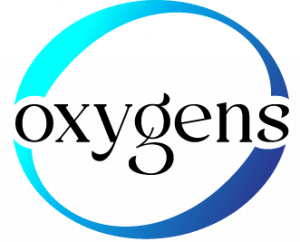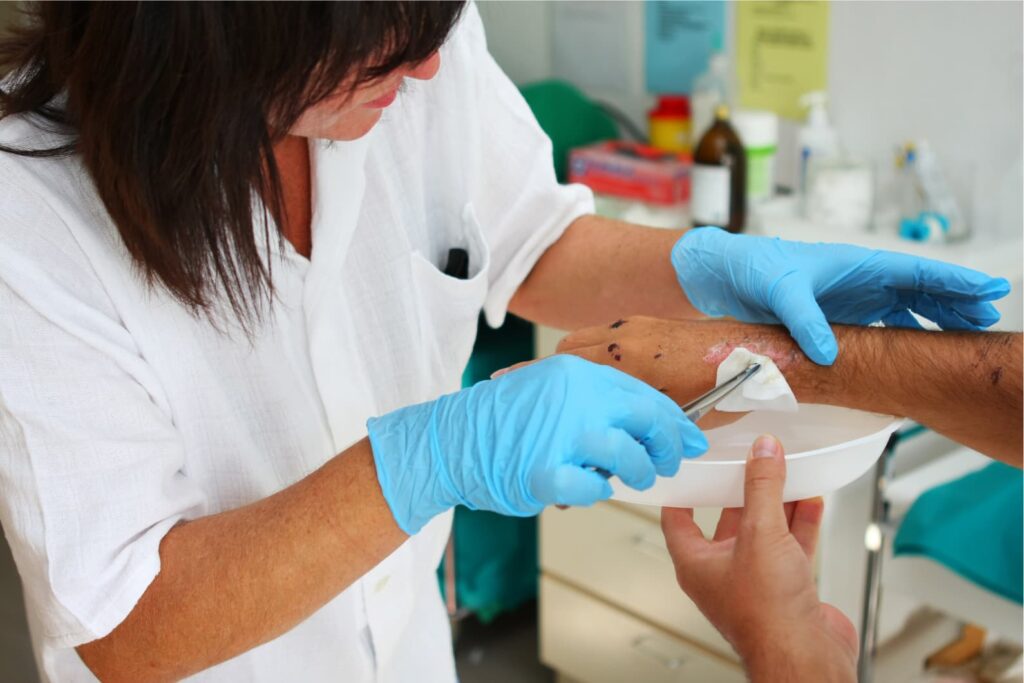Skin wounds that fail to heal properly can become chronic, affecting approximately 1% to 2% of adults. Factors such as the nature of the injury, severe infections, compromised blood supply, and metabolic disorders like diabetes can hinder the healing process. Hyperbaric oxygen therapy for wounds has emerged as a promising solution for promoting the healing of such wounds.
HBOT enhances blood oxygenation, potentially reducing inflammation, stimulating tissue regeneration, fighting infection, and boosting collagen production. Research supports the effectiveness of HBOT for various types of wounds, including complicated acute wounds, surgical wounds, crush injuries, and chronic wounds associated with conditions like diabetes and peripheral vascular disease.
There is barely anyone who has not experienced any wound during their lifetime. Minor cuts and wounds affecting the skin are pretty common. In some people, skin wounds occur due to some medical procedure or surgery. Fortunately, most skin wounds heal within a few days to weeks. All that may be left behind is a small scar.
However, statistics show that things are quite different for about 1% to 2% of adults. In such individuals, wounds fail to heal as expected – they become chronic1.
There could be a few reasons for poorly healing wounds. First, how fast any wound heals depends on the nature of the injury. Thus, wounds caused by crushing injuries are slow to heal. Similarly, wounds that develop severe infections are less likely to heal quickly.
Not only that, in some individuals, even small wounds do not heal properly due to some inherent reasons. Thus, for example, peripheral vascular disease is among the leading causes of poorly healing skin wounds. In addition, such wounds heal poorly due to compromised blood supply and, thus, low oxygen supply.
Another quite common cause of poorly healing wounds is diabetes and other metabolic disorders. As a result, such wounds have poor oxygens supply, they are often infected, and regenerative processes are compromised.
Hyperbaric oxygen therapy for wound healing
In most cases of slow wound healing, hyperbaric oxygen (HBOT) therapy can be of significant value. It may promote skin wound healing in multiple ways:
• It can quickly increase blood oxygenation and thus boost blood supply. This, in turn, may enhance local healing processes.
• HBOT considerably alters the local wound environment, lowering the production of inflammatory compounds and boosting local tissue regeneration.
• It promotes the closure of the local wound by promoting the formation of new blood vessels.
• It helps overcome infection. HBOT has antimicrobial properties. It suppresses bacterial and fungal growth.
• It enhances local collagen production, which is vital for faster wound healing.
• Above all, it appears to boost wound nitric oxide (NO) levels and thus promote healing2.
What does the science say about HBOT and wound healing?
There is much research into the subject, and HBO is known to help promote wound healing. It is especially good for wounds with necrotizing soft tissue infection, crush injuries, thermal burns, and more3. Studies suggest that HBO is even good when the oxygen supply is not compromised. In addition, it can stimulate wound healing in both the normal and ischemic skin4.
One of the recent systemic reviews that analyzed the massive number of clinical studies concluded that HBO therapy is good for promoting the healing of complicated acute wounds, flaps, and grafts, too5.
Similarly, there are studies to confirm that HBO is also good for promoting the healing of complicated and poorly healing wounds in those living with issues like diabetes. In addition, studies suggest that HBO therapy may stimulate local immunity and healing processes and help inhibit bacterial toxins, apart from suppressing the growth of pathogens6.
To sum up, HBO therapy is good for promoting skin and wound healing in complicated acute wounds like surgical wounds or crush injuries and chronic and poorly healing skin wounds like those present in those living with diabetes and peripheral vascular disease.
Ask a Question, request a Brochure and/or a Quotation:
If you have any questions or would like to know further details of our product range, availability, and pricing for hire or purchase please use the button below.
References
1. Järbrink K, Ni G, Sönnergren H, et al. Prevalence and incidence of chronic wounds and related complications: a protocol for a systematic review. Syst Rev. 2016;5(1):152. doi:10.1186/s13643-016-0329-y
2. Boykin JVJ, Baylis C. Hyperbaric Oxygen Therapy Mediates Increased Nitric Oxide Production Associated With Wound Healing: A Preliminary Study. Advances in Skin & Wound Care. 2007;20(7):382. doi:10.1097/01.ASW.0000280198.81130.d5
3. Bhutani S, Vishwanath G. Hyperbaric oxygen and wound healing. Indian J Plast Surg. 2012;45(2):316-324. doi:10.4103/0970-0358.101309
4. Uhl E, Sirsjö A, Haapaniemi T, Nilsson G, Nylander G. Hyperbaric oxygen improves wound healing in normal and ischemic skin tissue. Plast Reconstr Surg. 1994;93(4):835-841. doi:10.1097/00006534-199404000-00028
5. Dauwe PB, Pulikkottil BJ, Lavery L, Stuzin JM, Rohrich RJ. Does Hyperbaric Oxygen Therapy Work in Facilitating Acute Wound Healing: A Systematic Review. Plastic and Reconstructive Surgery. 2014;133(2):208e. doi:10.1097/01.prs.0000436849.79161.a4
6. Bakker DJ. Hyperbaric oxygen therapy and the diabetic foot. Diabetes/Metabolism Research and Reviews. 2000;16(S1):S55-S58. doi:10.1002/1520-7560(200009/10)16:1+<::AID-DMRR132>3.0.CO;2-T

